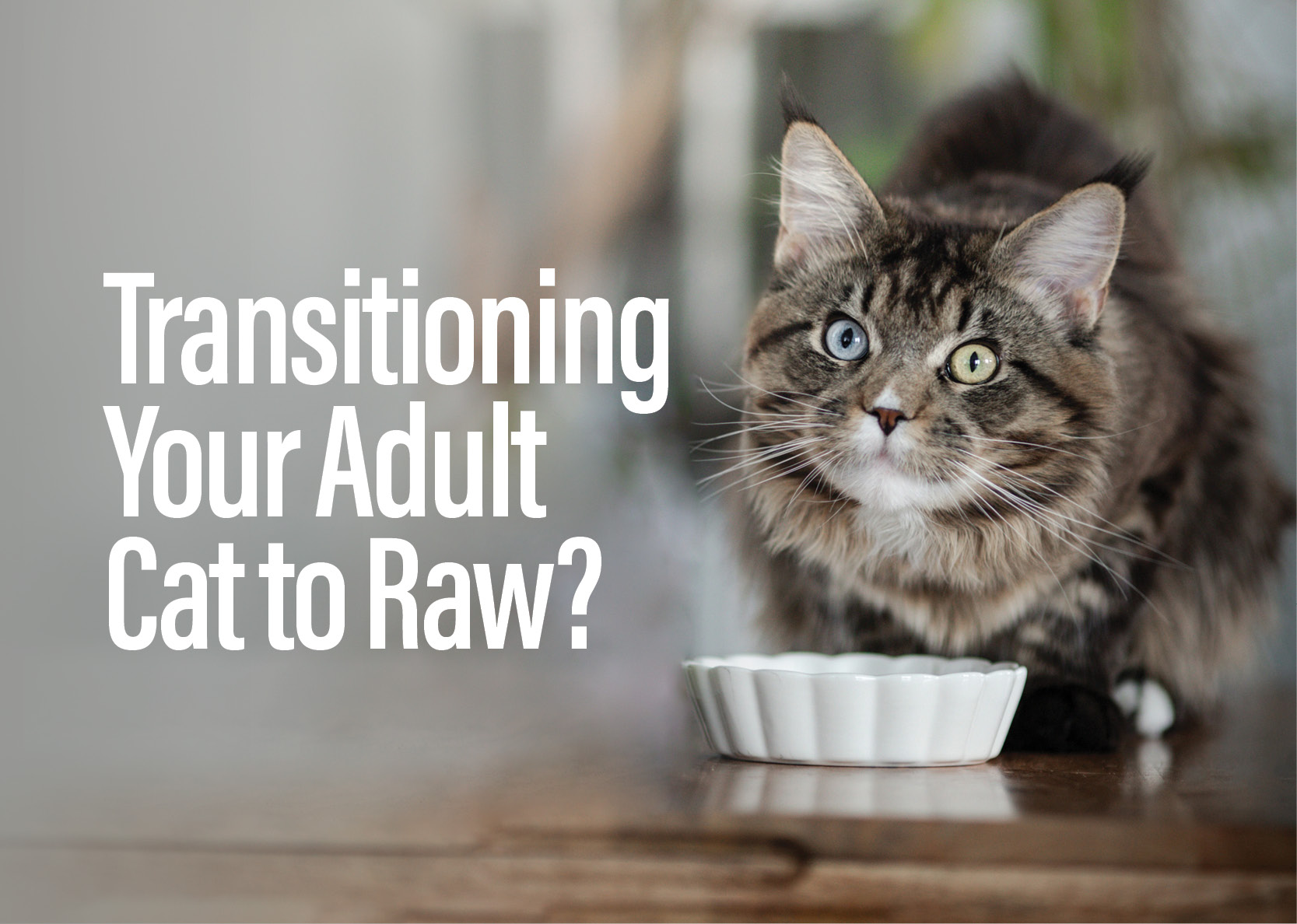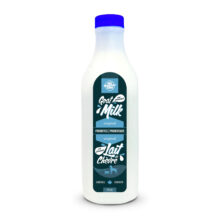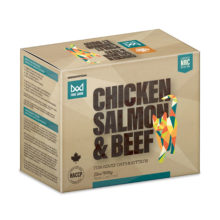Considered an obligate carnivore, lacking the enzymes that break down carbohydrates, cats even more so than dogs, can benefit from eating a fresh food, species appropriate balanced raw diet. It’s true that some fresh food is better than none and that it’s never too late to start introducing some fresh food into your cat’s diet or to make the switch to raw. Cats are known for their pickiness, and even if they don’t embrace the new tastes and textures immediately, they can learn to love eating raw, but it can take some patience, persistence, and trial and error.
Unlike dogs, cats are known for imprinting on food at a very early age. Meaning that if they didn’t try it when they were young, chances are that anything new later might not be accepted with any type of enthusiasm, though this isn’t always the case. Even their mother’s diet and willingness to eat different foods, has been proven to play a significant role in a kitten’s food preferences.
Many cat owners choose to free feed, simply leaving food out to let their cat graze throughout the day. Though it is convenient, it’s not the healthiest option as cats fed a high-carbohydrate diet are prone to obesity and when left out, can lead to overeating, and in the long term, diabetes. Perpetuating the problem, to keep cats eating, kibble contains special ingredients designed by scientists, called palatants, or flavour enhancers, whose sole purpose is to entice a cat back to the food bowl. The flavour coating on each otherwise tasteless, extruded kibble bit is what the cat becomes accustomed to. Some cats don’t immediately try raw the first time it’s offered because the scent, flavour, and texture are not familiar, and it is not being recognized as food. No wonder kibble is often referred to as “kitty crack”.
If you’re ready to start feeding raw, and you’ve never attempted it before, the best thing to do is just offer it. At your next scheduled mealtime, in place of the kibble offer some Fare Game Chicken & Salmon with Beef, or another Fare Game recipe in their bowl that you think they might enjoy. If your cat devours it, and some do, the transition period is over! Your new raw-loving cat is sure to go crazy for each of our 6 Fare Game recipes enjoying proteins like chicken, beef, salmon, sardine, lamb, pork, rabbit, duck, quail, and even kangaroo.
If your cat doesn’t eagerly accept that first raw meal, perhaps a more gradual approach is needed. It’s best to start with a poultry-based meal – they’re easiest to digest. In this case, your transition week might look something like this:
- Day 1–2: 25% Raw, 75% Kibble
- Day 3–4: 50% Raw, 50% Kibble
- Day 5–6: 75% Raw, 25% Kibble
- Day 7: 100% Raw
If your cat refuses a meal after you’ve just increased the raw portion of the meal, go back to the previous step, and stay there for a few more days and then try adding slightly more, at a later date. This transition period, for some cats, can last a few months or longer, and that’s okay. Patience and persistence are crucial. In this regard, cats are similar to human toddlers – the first time they try something it might be less than delightful, but if you keep offering it, a lot of the time, they learn to enjoy it.
Or perhaps you’ve tried feeding your cat raw in the past, but have not been successful in your cat enjoying the meal, we have some tips to share.
- If you’re currently free feeding, switch to scheduled feeding times – this can be the number one roadblock to success when transitioning cats.
- Transition to canned and then to raw. For some cats, the texture is part of their reluctance to try raw and canned, moist food could help bridge the gap. You can then take the gradual transition approach and mix the new raw diet with the canned a little at a time.
- Add some raw fermented goat milk. It contains natural probiotics and most cats LOVE it. Just mix a bit into the raw or partially raw meal.
- Place a small portion of the raw food beside their normal food in the food dish. Just having it there, and smelling it, may pique curiosity enough to give it a try.
- Offer the food at room temperature. A lot of cats don’t prefer cold food and if it’s warm, it also has more aroma that can help entice them to eat.
- Sprinkle on some extras. If your cat likes tuna water, liver treats, etc., use just a little to get them closer to the food in the dish.
- Try hand feeding. Some cats will willingly lick food off a finger before trying something new in the food bowl.
- Try feeding other new cat-friendly foods like a piece of cheese, eggs, a little bit of cottage cheese, a canned sardine, or even some of your uncooked ground beef.
We know that raw is the best diet for your pet carnivore but what should you do if your cat simply refuses to eat it? I will be the first to tell you, this is a battle of wills that you will not win, and this is where persistence and patience come into play. It might not have worked this time, but you can always try again. The diet that domestic cats have eaten the past hundred years has caused their liver to adapt by developing a special metabolic pathway to metabolize the extra, unneeded glucose, causing them to be unable to fast. A cat used to eating carbohydrate-loaded kibble, and then being deprived of food, can see rapid and dramatic jumps and dips in their blood sugar, causing potentially serious health complications. The tough love approach that can work for many dogs, can be quite dangerous for a cat.
We hope these tips and tricks help your cat learn to appreciate a real, fresh food diet. Some cats surprise their human slaves and accept their new raw diet with gusto while others take months to fully make the transition. Either way, the benefits are great and real.
Do you have some additional tips that worked for your transition? Let us know!
NEW to our Fare Game lineup February 2023:
Fare Game Kangaroo & Lamb & Fare Game Chicken & Beef




